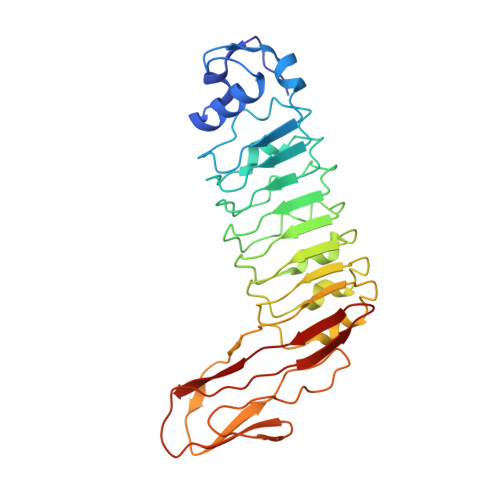Ligand-Mediated Dimerization of the met Receptor Tyrosine Kinase by the Bacterial Invasion Protein Inlb.
Ferraris, D.M., Gherardi, E., Di, Y., Heinz, D.W., Niemann, H.H.(2010) J Mol Biology 395: 522
- PubMed: 19900460
- DOI: https://doi.org/10.1016/j.jmb.2009.10.074
- Primary Citation of Related Structures:
2WQU, 2WQV, 2WQW, 2WQX - PubMed Abstract:
The Listeria monocytogenes surface protein InlB mediates bacterial invasion into host cells by activating the human receptor tyrosine kinase Met. So far, it is unknown how InlB or the physiological Met ligand hepatocyte growth factor/scatter factor causes Met dimerization, which is considered a prerequisite for receptor activation. We determined two new structures of InlB, revealing a recurring, antiparallel, dimeric arrangement, in which the two protomers interact through the convex face of the leucine-rich repeat domain. The same contact is found in one structure of the InlB-Met complex. Mutations disrupting the interprotomeric contact of InlB reduced its ability to activate Met and downstream signaling. Conversely, stabilization of this crystal contact by two intermolecular disulfide bonds generates a constitutively dimeric InlB variant with exceptionally high signaling activity, which can stimulate cell motility and cell division. These data demonstrate that the signaling-competent InlB-Met complex assembles with 2:2 stoichiometry around a back-to-back InlB dimer, enabling the direct contact between the stalk region of two Met molecules.
- Division of Structural Biology, Helmholtz Centre for Infection Research (HZI), Inhoffenstrasse 7, 38124 Braunschweig, Germany. yyoshiki@riken.jp
Organizational Affiliation:


















